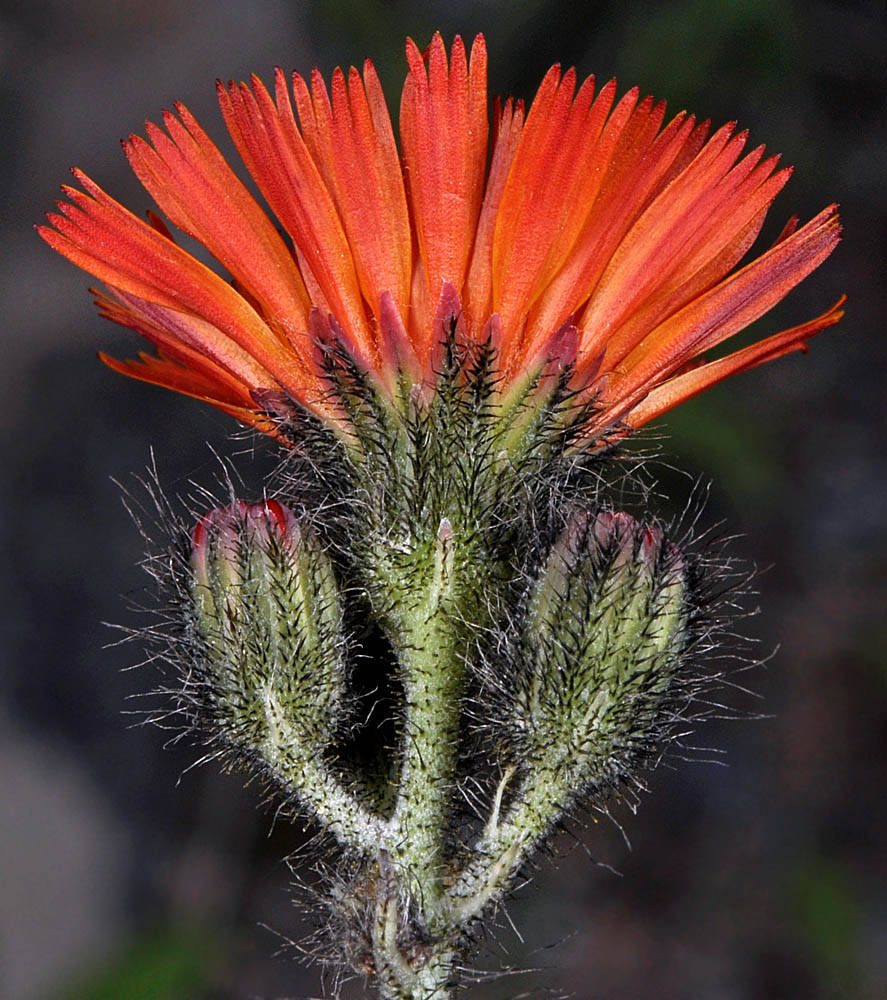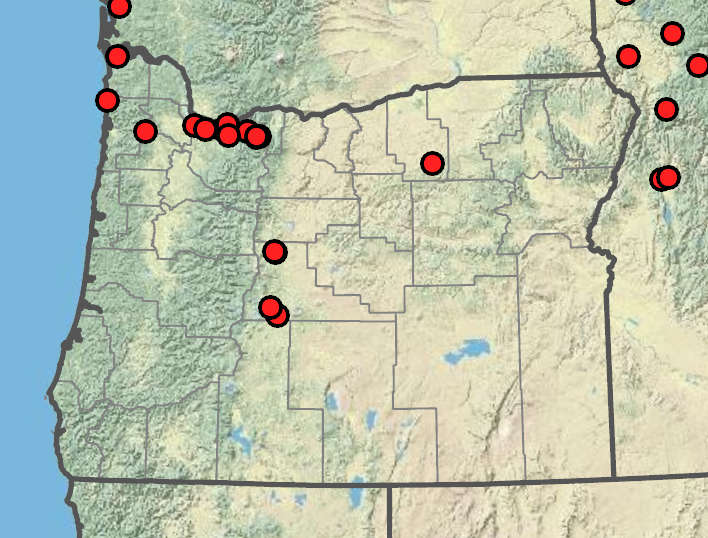Hieracium aurantiacum
Hieracium bolanderi
devil's paintbrush, king-devil, orange hawkweed
Bolander's hawkweed
erect; simple, pilose-hispid, usually also stipitate-glandular, tomentulose distally.
simple or branched, glabrous or tomentulose, sometimes pilose-hispid near bases.
basal, sometimes 1 near stem base, oblanceolate, 5–20 cm;
margins entire;
tips acute or obtuse;
surfaces pilose-setose;
petioles short, winged.
basal and sometimes a few reduced cauline, obovate or oblanceolate, 2–10+ cm;
margins entire, rarely remotely denticulate;
tips acute or obtuse;
surfaces pilose-hispid, abaxially sometimes glabrous;
basal short-petiolate;
cauline sessile, often winged.
raceme- or panicle-like arrays, bracteate or not.
raceme- or panicle-like arrays, bracteate.
campanulate in flower; ovoid in fruit, 6–8 mm.
campanulate in flower; ovoid in fruit, 7–10 mm.
25–100+;
ligules 10–15 mm; reddish orange, drying purplish.
6–12;
ligules 7–15 mm, yellow.
linear-lanceolate;
surfaces blackish stipitate-glandular, usually setose-hispid; inner 13–30; outer > inner.
linear-lanceolate;
surfaces glabrous or sparsely pilose-setose; inner 8–14; outer > inner.
columnar, 1.2–2 mm, dark brown.
columnar or somewhat enlarged toward base, 5–5.5 mm, brown or straw-colored.
=18, 27, 36, 45, 54, 63, 72.
Hieracium aurantiacum
Hieracium bolanderi
Disturbed areas, roadsides, clearcuts, riverbanks, pastures. Flowering Jun–Aug. 100–1400 m. BW, Casc, CR, ECas. CA, ID, NV, WA; scattered in North America; Europe. Exotic.
Hieracium aurantiacum is a conspicuous and well-known weed over much of the United States and southern Canada. Its scattered distribution in Oregon indicates an ability to disperse by seed, and once established it may persist and spread by both seeds and stolons.
Ridgetops, wooded slopes, cliffs, talus, road-banks, serpentine. Flowering Jun–Aug. 400–2400 m. Casc, CR, Sisk. CA. Native.
Collections of Hieracium bolanderi from the southern Cascades may show tomentulose involucres suggestive of hybridization with H. scouleri or H. greenei.
Kenton Chambers
Kenton Chambers





